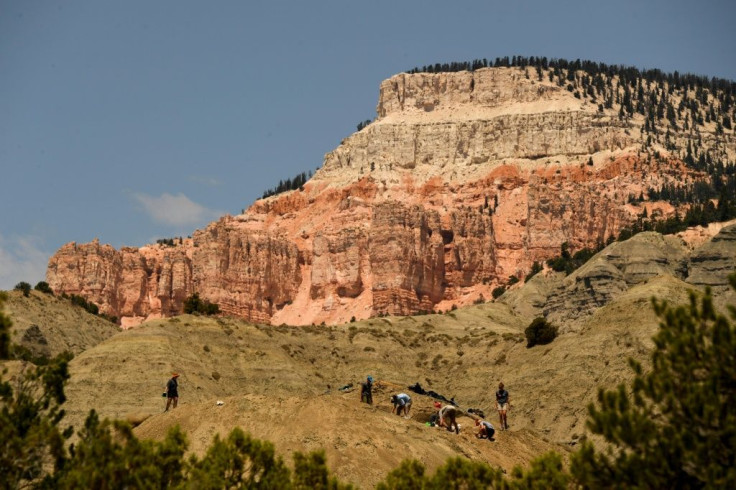Biden Restores Protections To Utah Land Where Dinosaurs Once Roamed
Utah land rich in dinosaur fossils has regained protection stripped away by former President Donald Trump, easing fears that they would be ravaged by mining and other commercial activity.
"Close to 10 percent of all dinosaurs known in the world are from Utah," said Jim Kirkland, a paleontologist who has explored Utah's Grand Staircase monument area for nearly 50 years. "It's pretty remarkable."
Grand Staircase has a worldwide reputation for the quality and range of dinosaur fossils found.
At the end of 2017, Trump's administration pulled back borders of three protected areas, two of them in Utah, opening previously safeguarded land to mining and fishing.
The move was popular with industry groups but angered conservationists, researchers, and indigenous tribes.
"When they cut the boundaries back, some sites that are near and dear to my heart, that I had discovered, were chopped out," Kirkland told AFP.
He was left to hope that the remains of triceratops and other dinosaurs would not be obliterated in the name of corporate profit.
President Joe Biden on Friday restored environmental protections for two wild Utah expanses linked to America's indigenous history, and also a biodiverse area of the Atlantic.
Biden signed the proclamations at a ceremony on the North Lawn at the White House, restoring the full size and status at Bears Ears and Grand Staircase-Escalante monuments in Utah, as well as the Northeast Canyons and Seamounts area off the east coast.
"After the last administration chipped away their protections, today I'm proud to announce the protection and expansion of three of our most treasured national monuments," he said.
For paleontologists, few regions in the world come close to the Rocky Mountains, with the dinosaur treasures buried there.
During the Late Cretaceous period -- 100 to 66 million ago years ago, just before the dinosaurs went extinct -- all kinds of dinosaurs and mammals inhabited the area.
Researchers continue to be amazed by the diversity and abundance of dinosaur bones found here, along with how well they have been preserved.

A few scattered vertebrae are not enough to identify a previously unknown species. To do that, scientists need many parts of a skeleton and, ideally, specimens from several of the creatures.
"So many of our duck-billed dinosaurs, like this one, are still covered with the impressions of their skin; you can see their scales," said Joe Sertich, dinosaurs curator at the Denver Museum of Nature & Science.
"The mudstone and sandstone of Grand Staircase preserve some of the best quality dinosaur bones you'll see anywhere in the world."
But the land is also rich in minerals such as coal and it is of interest to the tourism industry and ranchers.
Sertich believes the competing interests could co-exist, but taking away protected status opens the door to theft, vandalism, and destruction.
"When you operate a coal mine... many of these fossils are lost forever," Sertich told AFP during a tour of the museum.
And while some may think that digging up dinosaur bones is not a priority, scientists say studying how they lived and died provides a better understanding of climate change threatening life today.
"By going back into dinosaur ecosystems, we learn a lot about the world around us right now," Sertich said.
"This is the only way we can learn how evolution works on millions-of-year time scales."
He has been combing the Grand Staircase for fossils for 17 years.
"Being able to find to find new dinosaurs every time you spend one or two weeks out in the field is unlike anything you can do anywhere," the museum curator said.
Sertich pointed to bones from a new species of domed dinosaur that were unearthed just five meters from Trump's shrunken boundary line.
"By preserving a place like this, we have this repository where dinosaurs can always be discovered," Sertich said.
© Copyright AFP 2024. All rights reserved.











